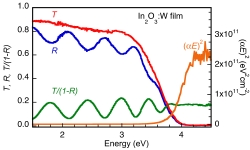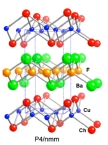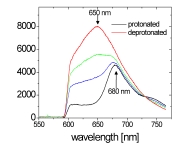
OPTICAL TWEEZERS TRAPPING
A strongly focused laser beam exerts a force on a particle that attracts the particle toward the focus where the intensity is largest. This technique has been dubbed optical tweezers because it permits control over the position and orientation of the trapped particle. Optical tweezers have been used for a wide array of applications in physics, biology, and engineering. We are collaborating with chemists and biologists to use optical tweezers to measure biochemical properties in microfludic systems and within cells.
|

SPECTROSCOPY OF MATERIALS
Spectroscopic measurements of the reflection and transmission of thin films of new materials are used for the determination of refractive indices, film thicknesses, absorption constants and band gaps. The laboratory comprises three spectrometers for measurements on thin film samples and powdered samples over the ultraviolet to infrared wavelength range 200 nm - 2500 nm. The system can also take spectra of samples cooled to 80K.
|

Force measurements on resonant particles
Optical tweezers can trap small particles at the focus of a laser beam. Typical particles are 1 micron in size, but atoms can also be trapped by tuning the laser close to a strong resonance transition where the optical response of the atom is enhanced. We are exploring the possibilities of using resonance-enhanced optical forces to trap nanoparticles.
|

Wide band gap semiconductors
Wide bandgap semiconductors have a broad range of uses. Materials development at OSU is focused on p-type conductors for transparent electronics. We use a suite of spectroscopy instruments to characterize the optical properties of these new materials.
|

Trapping fluorescent ion sensors
Ion optodes are ion-selective optical sensors designed for intracellular monitoring. They are polymer microbeads that detect changes in ion
concentration through changes in the fluorescence spectrum. We are developing an optical tweezers system to control and manipulate nanosensors
within a solution or a cell.
|

Multilayer dielectric optical elements
OSU chemists have developed a solution process for deposition of dielectric materials suitable for optical and electronic applications. We have used this novel method to fabricate stacks of high-index TiO2 and low-index aluminum phosphate (AlPO) for use in optical elements. We have fabricated multilayer dielectric mirrors (Distributed Bragg Reflectors) and an optical microcavity.
|